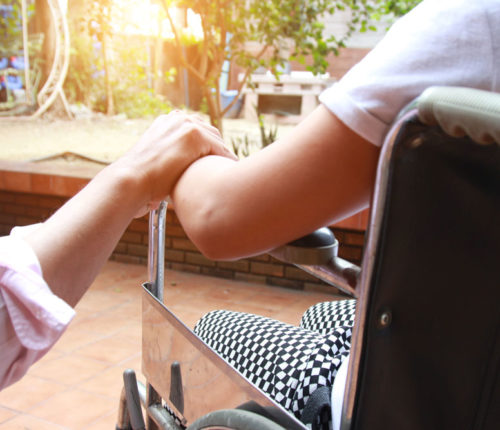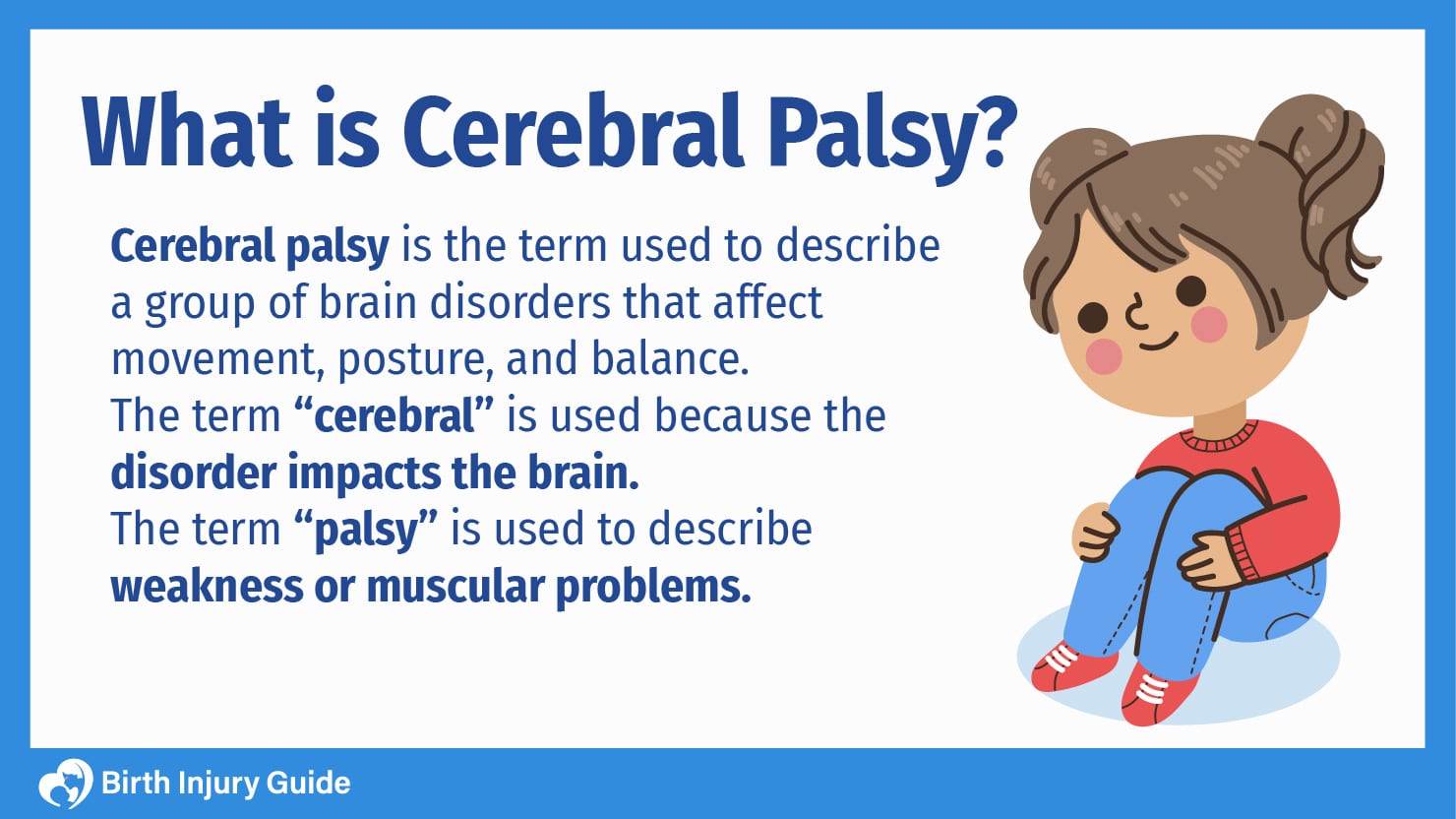
Can a Child Outgrow Cerebral Palsy?
Can a child outgrow cerebral palsy? This is a question many parents ask upon discovering that their child has the disorder. There is an abundance of information available online discussing the varying ways that cerebral palsy affects individuals as they grow, develop, and age. The symptoms associated with cerebral palsy often vary greatly, with some individuals showing almost no sign of having the condition.
But can a child outgrow cerebral palsy? Let’s take a look at what cerebral palsy is, how it impacts children and what happens as individuals with cerebral palsy age.
What is Cerebral Palsy?
Cerebral palsy is the term used to describe a group of brain disorders that affect movement, posture, and balance. The term “cerebral” is used because the disorder impacts the brain. The term “palsy” is used to describe weakness or muscular problems.

Cerebral palsy is caused by abnormalities or damage in the brain during development. Abnormalities occur during pregnancy, and injuries to the brain may occur during pregnancy or shortly after childbirth. Depending on the part of the brain that is affected, cerebral palsy may be classified into one of four main categories, or types, which are:
- Spastic Cerebral Palsy – The most common form, comprising around 80 percent of all cerebral palsy diagnoses. Spastic cerebral palsy results in stiff muscles in the limbs, and may impact only one side of the body, or both.
- Dyskinetic Cerebral Palsy – Dyskinetic cerebral palsy impacts movement of the limbs and extremities (hands and feet). Movements may be jerky or rapid, and are often uncontrollable.
- Ataxic Cerebral Palsy – Ataxic cerebral palsy primarily impacts coordination and balance. Individuals with ataxic cerebral palsy may have difficulty walking or making detailed controlled movements like writing or reaching for objects.
- Mixed Cerebral Palsy – Some individuals experience symptoms associated with more than one type of cerebral palsy. For these individuals, a mixed diagnosis is made, and treatment plans are established accordingly.
Everyone who is diagnosed with cerebral palsy experiences the disorder differently. A great deal of the variance depends on the part of the brain that is damaged, the severity of that damage, and the presence of any related health conditions, such as seizures, or difficulty with vision or hearing. These factors also impact treatment options and prognosis.
Can a Child Outgrow Cerebral Palsy?
Can a child outgrow cerebral palsy? The short answer to this question is “no”. Cerebral palsy is a lifelong condition. That does not mean, however, that someone cannot overcome symptoms and obstacles in order to live a more mobile, independent life. Some research has shown that children involved with early intervention strategies have overcome some of the most limiting symptoms.
In 1981, the American Academy of Pediatrics published research identifying 118 children with cerebral palsy who were found to be “free of motor handicap at the age of 7 years”. Symptoms resolved, or normalized, allowing children more independence. It is important to note, however, that a normalizing of cerebral palsy symptoms did not show improvement or resolution of symptoms related to other disorders, such as seizures.
In this study, children who “outgrew” cerebral palsy symptoms were more likely to experience certain symptoms associated with related disorders, including seizures, speech abnormalities, and behavioral disorders. This suggests that some children may be able to overcome their cerebral palsy symptoms, but that does not mean that they no longer have the disorder, or that they outgrew it.
How Does Cerebral Palsy Change as We Age?
Though one cannot outgrow cerebral palsy, the symptoms can definitely change as we age. As we get older, the disorder does not get “worse”, but there can be shifts in symptoms and severity. In 2016, the British Medical Journal (BMJ) published a study called “Ageing with Cerebral Palsy; What are the Health Experiences of Adults with Cerebral Palsy? A Qualitative Study”.
In this study, researchers aimed at increasing awareness of the relationship between aging and cerebral palsy. The goal was to help enlighten healthcare providers and caregivers, though the results would be useful for anyone in contact with an individual diagnosed with cerebral palsy. The study focused on five primary themes:
Acceptance of Change
Study participants were aware that changes would take place as they age, and that those changes would be different than what their non-cerebral palsy peers might experience. Participants reported:
- Increased fatigue
- Diminished energy
- General “slowing down” at an earlier age than their peers
- Need to adjust daily activities to compensate for fatigue and energy loss
- Accepting changes for what they are was reported to be “liberating” for many individuals
Exploring Identity
All study participants reported that cerebral palsy was a component of their lives, but it did not encompass their entire being. Researchers noted a common thread during research – that aging has caused many participants to question who they are. Participants questioned their personal and social identity more as they aged, with varying perceptions of their disabilities and how they were “seen” by themselves and others.
Taking Charge of Help
Study participants reported that aging led them to reflect on their need for help – be it current, increased, or future need. Participants who had more control and choices related to help reported a more positive experience. Participants consistently reported a struggle between independence and dependence, and the need for to be actively involved in planning and maintaining caregiver relationships.
Rethinking the Future
Study participants often spoke about their futures – goals, aspirations, and plans. Most participants reported an understanding that physical limitations with aging may impact their plans. Researchers noted that, to compensate, many participants began planning for the future earlier in life.
Interacting with Health Professionals
The majority of study participants were generally healthy, and most only relied on routine or “occasional” visits to their healthcare provider. Participants reflected on positive and negative interactions with healthcare providers, which suggested that cerebral palsy patients often feel that they are not being heard and are not allowed to be active participants in their healthcare. Many participants reported feeling that they were not a priority for healthcare providers, or had been discarded.
As we age, no matter what our overall health may be, we inevitably take time to stop, reassess our goals and priorities, make plans for the future, and manage our care. As this research shows, many individuals with cerebral palsy feel that they are not prioritized by healthcare providers, or are not allowed to be an active part of their health and wellness. This is a serious injustice to these individuals, and should not be tolerated.
Cerebral Palsy Life Span
Cerebral palsy is a disorder that changes as we age, but never really goes away. Many people wonder about the cerebral palsy life span and if life expectancy rates drop among people with the disorder. Generally, there is no set life expectancy or general life span given to people with cerebral palsy. Instead, their life span depends on a variety of factors, such as their lifestyle, other medical conditions and overall health.
Learn More about Cerebral Palsy
Turning back to the original question of can a child outgrow cerebral palsy, we know that the answer is “no”. However, research shows us that the future, including aging, can be promising for individuals with cerebral palsy. Symptoms can resolve and change, and with some strategic or modified planning, the sky is the limit for individuals with cerebral palsy.
If you have questions about cerebral palsy, or need legal assistance with a birth injury case, contact Birth Injury Guide by completing our online form.

